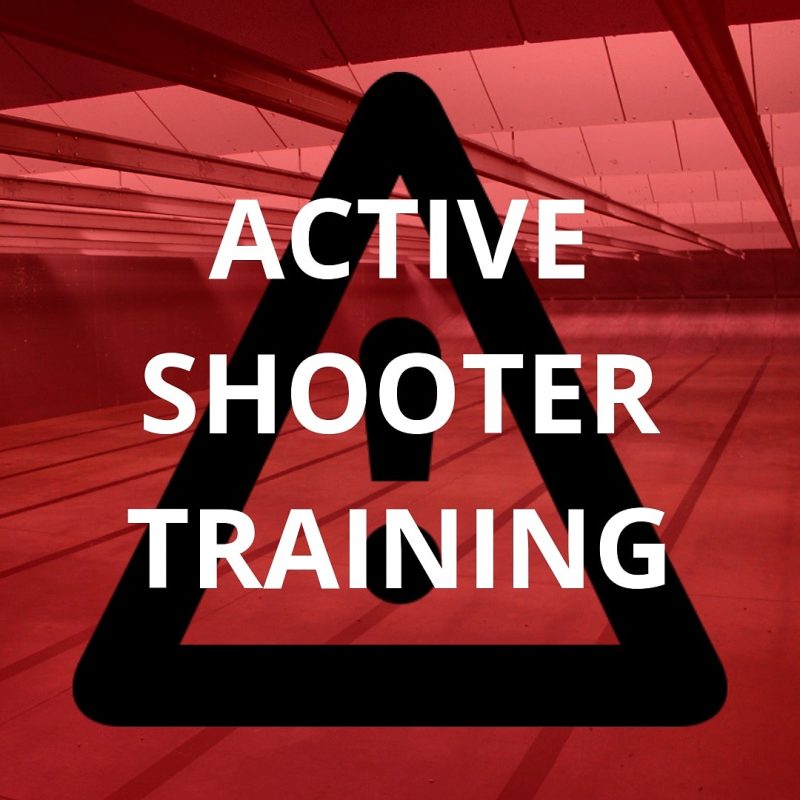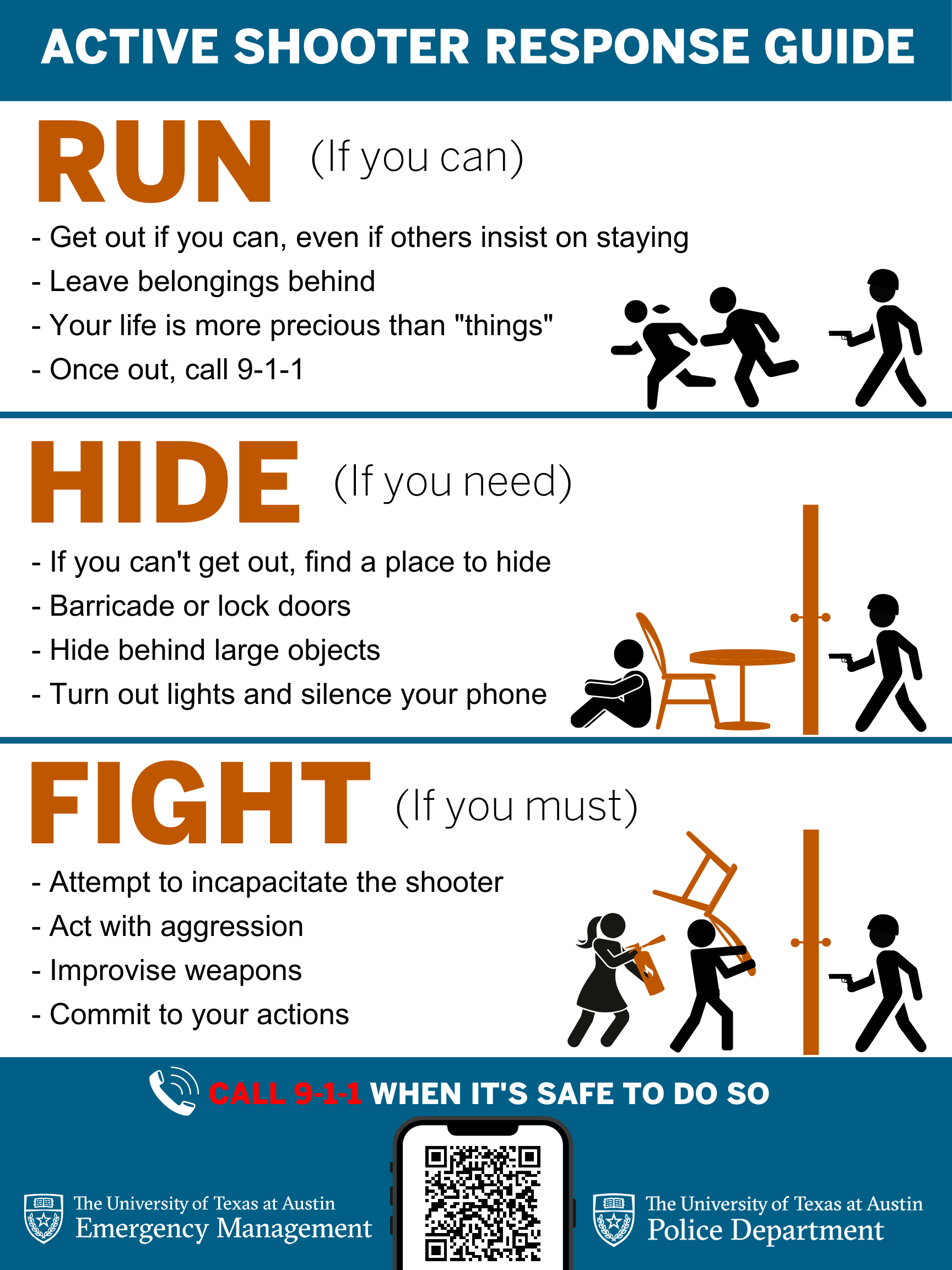Discovering the Trick Components and Objectives of Efficient Active Shooter Training Programs
Active shooter training programs are crucial in outfitting people and organizations with the required skills to react effectively to possible risks. These programs integrate essential parts, such as the "Run, Hide, Fight" technique, realistic scenario simulations, and communication protocols, promoting an environment of readiness. Furthermore, they stress psychological resilience to assist participants navigate high-stress situations. As we discover the intricacies of these training programs, it ends up being obvious that understanding their thorough nature is vital to improving safety measures and response capabilities. What details aspects absolutely specify their effectiveness?
Relevance of Active Shooter Training
Energetic shooter training programs are essential for boosting preparedness and action when faced with potential threats. These programs aim to equip people, companies, and areas with the knowledge and abilities required to effectively react to active shooter circumstances. The increasing regularity and intensity of such incidents emphasize the importance of proactive procedures, as timely and educated feedbacks can significantly mitigate injury.
Additionally, active shooter training cultivates a society of safety and awareness within organizations, whether they be colleges, workplaces, or public venues. Individuals find out to acknowledge early indication and comprehend the value of interaction and synergy during emergencies. This training not only highlights specific safety but likewise advertises a collective obligation to safeguard others.
Furthermore, these programs can aid relieve the stress and anxiety and worry that usually come with discussions regarding prospective hazards. By giving organized assistance and sensible strategies, people gain self-confidence in their capability to react properly. Ultimately, the importance of active shooter training depends on its prospective to conserve lives, minimize injuries, and cultivate a prepared and resistant community with the ability of facing unanticipated challenges.
Key Parts of Training Programs
Effective active shooter training programs generally include numerous essential components developed to prepare individuals for real-world situations. The first component is detailed education and learning on the nature of energetic shooter occurrences, including data, study, and mental aspects that influence aggressors. This academic foundation is essential for cultivating recognition and understanding among individuals.
Next, programs commonly include training on personal precaution, emphasizing the "Run, Hide, Fight" approach. Individuals discover just how to evaluate their environment, make fast decisions, and take suitable actions during a crisis. In addition, the inclusion of reliable interaction skills is vital, as individuals must comprehend how to report occurrences and share vital info with law enforcement.
An additional vital component is the participation of police or safety specialists, that give understandings right into tactical responses and the relevance of participation throughout a situation. Moreover, programs need to attend to the psychological consequences of an active shooter scenario, offering methods for coping and recovery.
Lastly, ongoing training and refresher training courses are critical to make certain that expertise remains present and individuals feel positive in their capacities. Together, these vital elements create an all-around training program that outfits people to respond efficiently to an active shooter occasion.
Realistic Situation Simulations
Practical situation simulations are Visit Website a vital facet of active shooter training programs, offering individuals with the opportunity to involve in hands-on practice that mirrors prospective real-life circumstances. These simulations improve the training experience by producing an immersive setting where individuals can apply academic expertise in functional settings.
Through making use of role-playing, mock scenarios, and specialized training centers, participants experience the immediate challenges and stressors related to an energetic shooter event. This technique of training promotes fast decision-making, synergy, and the application of safety and security protocols under stress. It enables -responders to develop vital abilities such as situational recognition, threat evaluation, and efficient evacuation treatments.
In addition, sensible simulations help to determine potential weak points in participants' actions, allowing trainers to offer targeted comments and boost total readiness. The unification of varying scenarios, including different areas and attacker profiles, further improves the training experience, making certain that individuals are well-appointed to deal with a series of possible scenarios.
Ultimately, these simulations offer not just to advise however also to develop confidence among individuals, fostering a sense of readiness that is necessary for effective emergency situation response despite an active shooter hazard.
Interaction Strategies in Training
Clear communication is crucial in active shooter training programs, as it directly affects the effectiveness of reaction efforts during a situation. active shooter training. Training participants should recognize the procedures and treatments that will certainly lead their activities if confronted with have a peek at these guys an energetic shooter situation. Establishing clear lines of communication makes sure that all people included can communicate info promptly and properly

Moreover, training programs need to emphasize the relevance of energetic listening. Ultimately, efficient interaction methods are important for preparing individuals to respond decisively and cohesively in the face of an active shooter case.

Mental Preparedness Techniques
Mental preparedness strategies are progressively identified as necessary elements of active shooter training programs - active shooter training. These techniques aim to furnish people with the mental resilience necessary to react effectively in high-stress circumstances. By promoting a frame of mind in harmony with prospective hazards, individuals can better handle concern, anxiety, and confusion during important incidents
Key mental preparedness methods include scenario-based training and stress and anxiety vaccination workouts. Scenario-based training submerses participants in sensible simulations that resemble the disorder of an active shooter event, allowing them to exercise decision-making under stress. This direct exposure aids develop experience with emergency protocols, boosting natural actions.
Stress inoculation includes progressive exposure to stress-inducing scenarios, permitting individuals to establish coping mechanisms. This can consist of breathing workouts, visualization techniques, and cognitive restructuring to reframe adverse thoughts. By incorporating these techniques, training programs can cultivate a feeling of self-confidence and control, which is crucial in situation situations.
Furthermore, post-incident emotional support is vital to address the emotional results of an energetic shooter occasion. Incorporating mental health and wellness sources into training programs not only prepares people for prompt reactions however likewise promotes long-lasting psychological well-being, eventually adding to a much safer and much more resistant environment.
Final Thought
Finally, effective energetic shooter training programs are important for boosting preparedness and action abilities in the face of prospective dangers. By including critical parts such as reasonable scenario simulations, communication techniques, and mental preparedness methods, these programs outfit individuals and companies with the necessary abilities to browse high-stress situations. Ultimately, a visit the website thorough approach to training fosters durability and promotes a culture of safety and security, therefore adding to the total protection of areas in the event of an energetic shooter event.